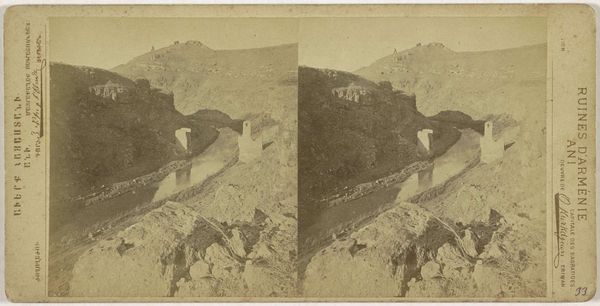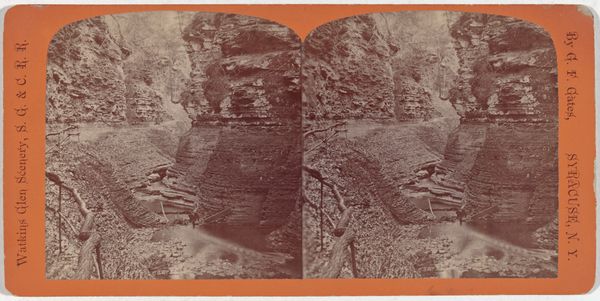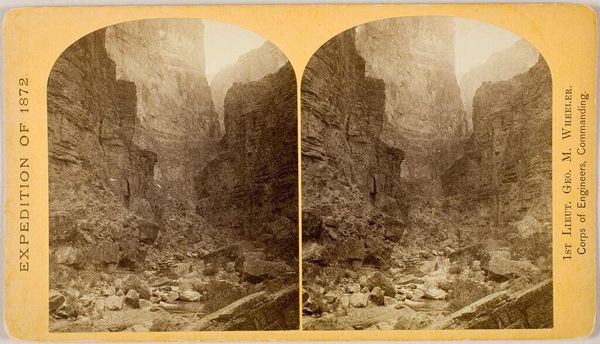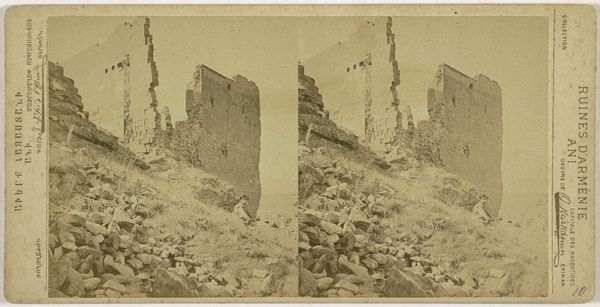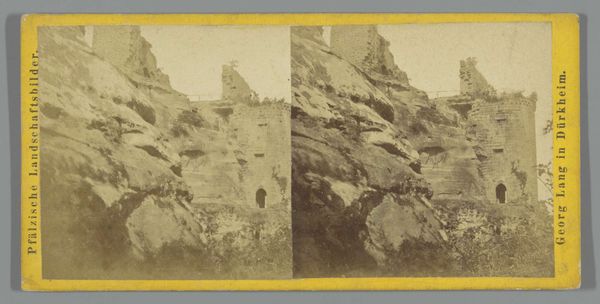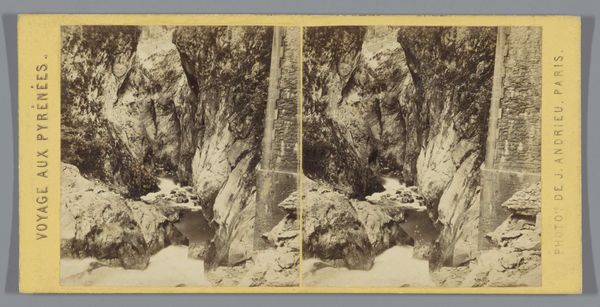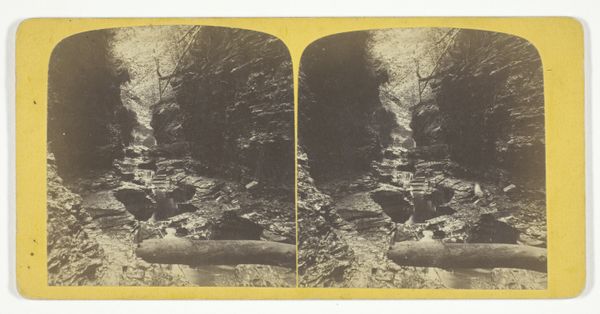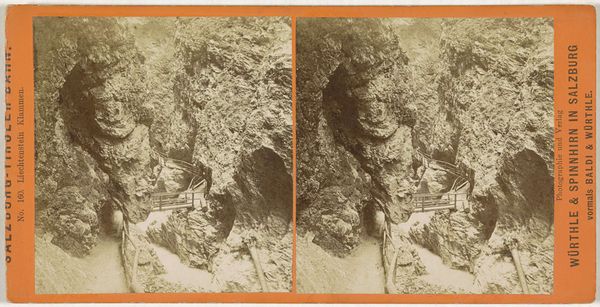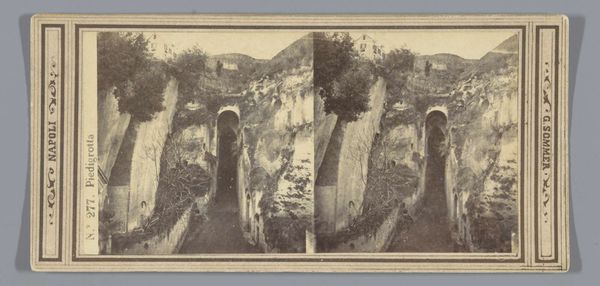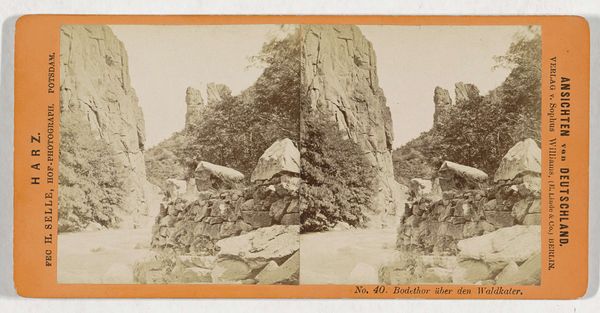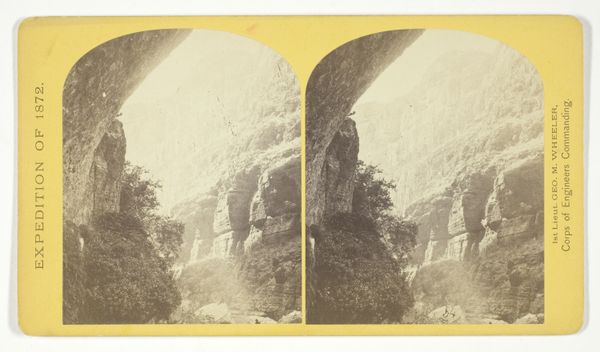
photography, gelatin-silver-print
#
medieval
#
landscape
#
photography
#
orientalism
#
gelatin-silver-print
Dimensions: height 90 mm, width 178 mm
Copyright: Rijks Museum: Open Domain
Curator: This gelatin-silver print, dating from sometime between 1875 and 1880, captures the "Klooster van de Maagden, Ani" or Convent of the Virgins, Ani. It's attributed to Onnes Kurkdjian. Editor: The stereoscopic effect here emphasizes the textures—the jagged stonework, the cliff face, everything feels worn down by time. It certainly evokes a mood of isolation and melancholy. Curator: Yes, the crumbling architecture of Ani speaks volumes. Once a vibrant medieval city, Ani held significant power as the capital of a large Armenian kingdom. Its demise underscores Armenia's turbulent history, marked by successive waves of invasions and cultural erasures. This image documents the orientalist fascination of the time, especially towards ruins. Editor: I'm immediately drawn to the formal structure. The strong diagonal lines create depth, and the contrast between the sharp, angular remains of the monastery and the organic forms of the surrounding landscape adds an interesting tension to the work. The limited tonal range in this monochromatic picture further reduces any sense of temporal context. Curator: Absolutely, and the location on the edge of a gorge likely provided some physical safety to the convent, while at the same time reflecting the limited options available to the Armenian people when making their home. Considering the photographic technology of the time, it’s interesting to examine what he chose to depict, versus the other ruins within view. The choice reflects certain ideas regarding power. Editor: Kurkdjian's strategic placement of the camera allows us to see all the forms within the frame without much clutter, while the stereoscopic view offers a type of visual haptic quality. This work certainly demonstrates how even historical photography benefits from this dual treatment, making the ruins tangible and seemingly within our reach, bridging that chasm of time itself. Curator: Seeing Ani through Kurkdjian's lens gives insight to that place as well as this period's views toward it, a reminder of Armenia's long and often painful journey through history. Editor: And for me, it’s a powerful case study in using photography to engage and reflect on how architecture—or what remains of it—can become symbolic in both form and placement.
Comments
No comments
Be the first to comment and join the conversation on the ultimate creative platform.
